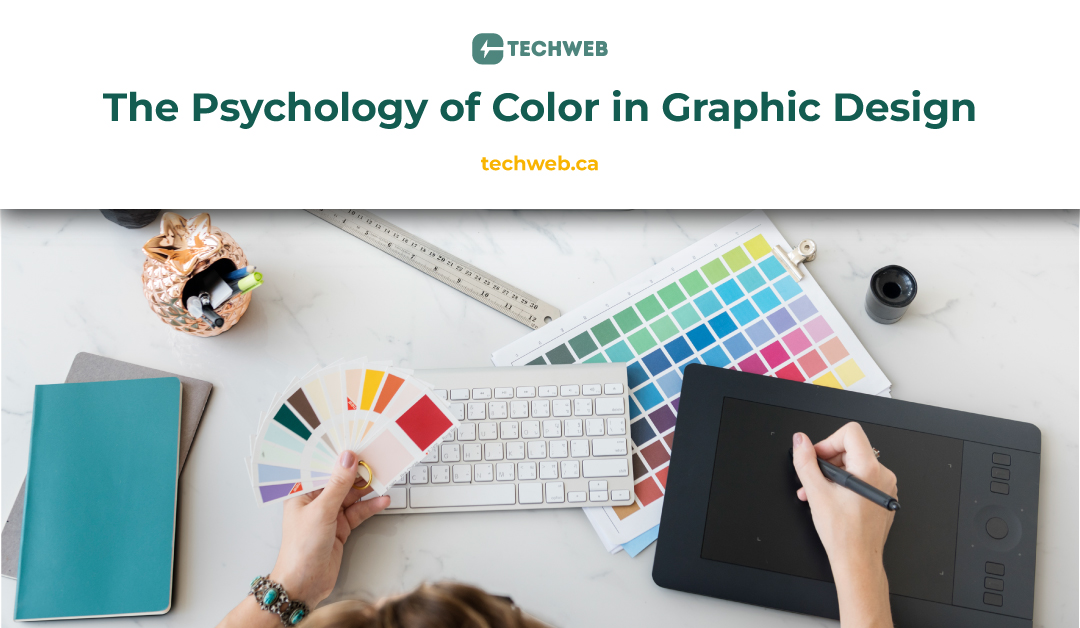The Psychology of Color in Graphic Design
Color is a powerful tool in the world of graphic design. It has the ability to evoke emotions, convey messages, and influence our perception of a brand or product. The psychology of color plays a significant role in how we interpret and respond to visual content.
In this blog, we’ll explore the impact of color on human psychology and its vital role in graphic design.
The Influence of Color on Emotions
Colors have the power to trigger emotional responses and influence our mood. Here’s a glimpse of the emotions commonly associated with different colors:
- Red: Passion, love, excitement, and urgency. It can also signify danger or caution.
- Blue: Trust, calmness, stability, and professionalism. Darker blues can represent strength and reliability.
- Yellow: Joy, optimism, and energy. It can also grab attention and suggest caution when used in a more intense shade.
- Green: Health, growth, harmony, and nature. It is often associated with eco-friendly and organic products.
- Orange: Creativity, enthusiasm, and warmth. It can also signify affordability.
- Purple: Luxury, creativity, and spirituality. Darker purples evoke a sense of opulence and sophistication.
- Pink: Romance, sweetness, and femininity. It’s often used to target a younger, female audience.
- Black: Elegance, sophistication, and power. It can also represent mystery and negativity.
- White: Purity, simplicity, and cleanliness. It’s commonly used in healthcare and minimalist designs.
Application in Graphic Design
- Branding: Color is a key component of brand identity. Companies carefully select colors that align with their values and resonate with their target audience. For example, the red used by Coca-Cola conveys excitement and energy, while the blue of Facebook represents trust and reliability.
- Call-to-Action Buttons: The color of buttons, especially call-to-action (CTA) buttons, can significantly impact user behavior. For example, a red “Buy Now” button can create a sense of urgency, while a green “Sign Up” button can suggest safety and harmony.
- Web Design: In web design, color is used to establish visual hierarchy, guide users’ attention, and create an emotional connection. Headers, banners, and background colors contribute to the overall user experience.
- Marketing and Advertising: Advertisers use color strategically to provoke emotions and create memorable campaigns. Think of the bright and cheerful colors often used in fast-food advertising to stimulate appetite.
- Packaging Design: The colors of product packaging influence purchasing decisions. Packaging with colors that align with the product’s intended use or its emotional appeal can impact consumer choices.
Cultural Variations
It’s important to note that the psychological effects of color can vary across cultures. For example, while white is associated with purity and weddings in Western cultures, it signifies mourning and death in some Asian cultures. Designers must be aware of these cultural nuances when creating content for a global audience.
The Art and Science of Color in Graphic Design
The use of color in graphic design is both an art and a science. It requires a creative understanding of aesthetics, as well as a psychological awareness of the emotional impact of colors. Successful graphic designers skillfully blend these elements to create designs that resonate with their audience and effectively convey their message.
The psychology of color in graphic design is a fascinating and essential aspect of visual communication. By understanding the emotional and psychological associations linked to different colors, graphic designers can harness the power of color to create designs that engage, inform, and inspire. The artful use of color can be the difference between a forgettable design and one that leaves a lasting impression.

